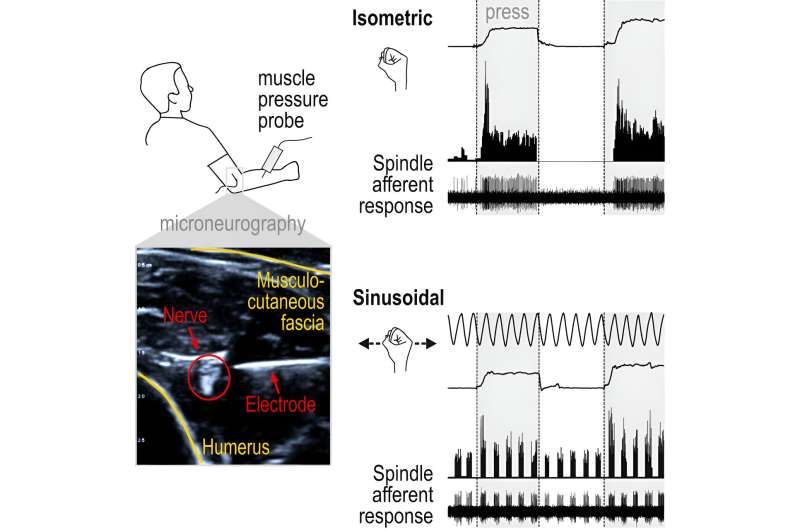This article has been reviewed according to Science X's editorial process and policies. Editors have highlighted the following attributes while ensuring the content's credibility:
fact-checked
peer-reviewed publication
trusted source
proofread
Pressure sensing by muscles provides a promising new target for treatments

A new study from Umeå University, Sweden, shows that the body's muscles sense mechanical pressure. This new discovery has important implications for movement neuroscience and may improve the design of training and rehabilitation to relieve stiff muscles. The work is published in Cell Reports.
"The results provide an important piece of the puzzle in understanding what information our nervous system receives from muscles," says Michael Dimitriou, associate professor at the Department of Medical and Translational Biology, Umeå University and the researcher who led the study.
The study focuses on muscle spindles, which are the main sensory receptors for proprioception. This is the "hidden sixth sense" about the mechanical state of the body and is crucial for the proper control of movements.
In the study, the researchers applied different levels of pressure on forearm muscles of awake volunteers, while recording signals from nerve fibers of muscle spindles located in the pressed muscle. When the participants' hands were still, the muscle spindles reacted strongly to muscle pressure, suggesting that pressure alone is a sufficient stimulus for these receptors.
The study also showed that when the hand was in motion, the pressure significantly enhanced the spindles' response to muscle stretch. This finding challenges the current understanding that muscle spindles only respond to stretch.
These discoveries could lead to significant advances in treating neuromuscular conditions, optimizing athletic training, and refining physical therapy techniques. For instance, better understanding of how muscle spindles detect pressure could provide new methods for managing muscle cramps or improving muscle recovery after injury.
The researchers also found that when they suddenly removed pressure from muscles, the activity of spindles dropped rapidly below normal levels. Because spindle signals reflexively increase muscle contraction and stiffness, weaker spindle signals are typically associated with less muscle stiffness. This finding led the researchers to propose the "triple-eight" technique for quickly relieving muscle stiffness.
It is well known that massage and trigger-point therapy can help alleviate muscle pain and stiffness. However, the underlying mechanisms have been unclear.
"If you don't know why an effect happens, it is hard to optimize this effect. In our study, we show that applying local pressure for just eight seconds and then suddenly removing it leads to a strong inhibition of spindle activity, especially if this is done twice in a row," says Dimitriou.
The "triple-eight" technique involves using a small object or finger to apply low to moderate levels of pressure over a sore or stiff muscle area for eight seconds, releasing pressure for eight seconds, and reapplying pressure for another eight seconds, followed by a slow stretching of the relaxed muscle.
"Anyone can use the 'triple-eight' technique for quickly reducing muscle stiffness," says Dimitriou.
More information: Frida Torell et al, Local muscle pressure stimulates the principal receptors for proprioception, Cell Reports (2024). DOI: 10.1016/j.celrep.2024.114699




















